Today we talk about crazy things like blatantly breaking the turn structure and forcing a drastic purge of the stack by Ending the turn with Sundial of the Infinite.
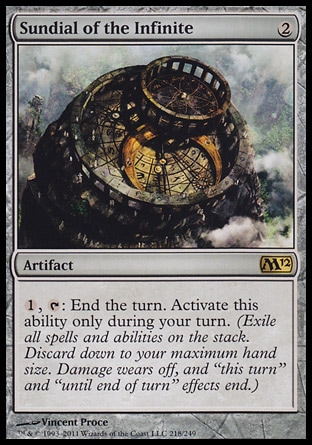
Oracle Text:
Artifact
{1}, {T}: End the turn. Activate this ability only during your turn. (Exile all spells and abilities on the stack. Discard down to your maximum hand size. Damage wears off, and "this turn" and "until end of turn" effects end.)
Even on this day there aren’t too many Magic cards that have special rules written for them. Today we are lucky to talk about one such card. The Sundial’s ability ends the turn. Time Stop can do the same thing. This effect has a Comprehensive Rule dedicated to it: [713. Ending the Turn]. But before we submerge into such unfathomable depths, let’s just look at Sundial of the Infinite card.
Sundial of the Infinite is a colorless artifact, we know that by looking at its mana cost {2} and its type line.
The ability of Sundial of the Infinite is activated, we identify it by the colon in the text. What’s before the colon is the activation cost, in our case it includes a tap symbol. Since Sundial isn’t a creature, it doesn’t matter how long we have been controlling it. If at any point it becomes a creature, it immediatly begins to matter. If you are confused by this, help yourself to a detailed analysis on summoning sickness.
You can activate an ability any time you have priority, but this particular ability has an activation limit: only during your turn. You still need to have priority =) After the ability is put on the stack, it no longer depends on the source. There is no point in “removing” the Sundial in response to its activation, it won’t alter the flow of the nearest future.
By the way, if your opponent controls a Sundial of the Infinite and you have an artifact removal in your sleeve, such as Krosan Grip, you can’t “remove” Sundial of the Infinite before your opponent activates its ability, as long as your opponent is cunning and smart. Thing is, when each turn starts, the first player to receive priority is the active player, it happens during the first upkeep step. And if he really wants to activate Sundial of the Infinite’s ability, you cannot hinder that. Why would he want to? For example, to save himself from losing the game.
When you activate Sundial of the Infinite’s ability and it resolves safely, your turn ends. According to rule 713, this means that:
- All objects are removed from the stack;
- All creatures and planeswalkers are removed from combat (if the ability resolved in course of the combat phase);
- SBA are performed. Neither player receives priority, and none of the triggered abilities are put onto the stack;
- Current step or phase ends. All phases are skipped down to the cleanup step;
- The cleanup step begins.
Now let’s talk in detail about each bullet:
All objects are removed from the stack
First of all, keep in mind that the stack is a game zone common for all players in the current game. Only spells (and their copies) and abilities (and their copies) can be on the stack. Nothing else can go there. To many players' great surprise, I'll commune a great secret: there are many things that don’t use the stack. For instance, combat damage, or mana abilities. It is hard to respond to an action that doesn’t use the stack. In fact, the term “respond” requires an all separate analysis, so we'll leave it be for now.
Second, you need to note that all objects are removed from the stack.
Finally, the objects are exiled, not countered. Which means, Multani’s Presence’s ability won’t trigger.
Time to see some pictures?

When Time Stop resolves, the card representing the spell on the stack will be exiled before it would go to the graveyard as the final part of resolution.
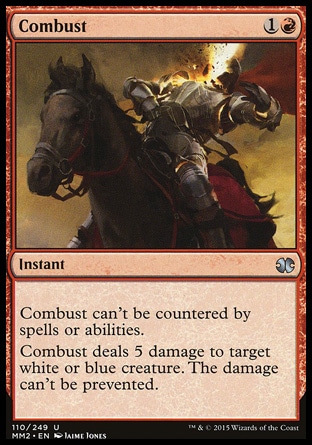
Combust cannot be countered, but if it is on the stack when Sundial of the Infinite’s ability resolves, it will be exiled, which isn’t countering!
All creatures and planeswalkers are removed from combat
If things are happening during the combat phase (which is the most complex phase in the entire turn), all creatures and planeswalkers are removed from combat.
Let me remind you that a combat phase consists of 5 steps:
- Beginning of combat.
- Declare attackers.
- Declare blockers.
- Combat damage.
- End of combat.
Attacking and blocking creatures remain such until the combat phase ends, or until they are removed from combat for any reason. For instance, through Sundial of the Infinite’s ability.
SBA are performed
There are many different SBA. A whole lot of 21. Normally, when SBA are finished performing, the triggers that have gone off are put onto the stack, and the player gets prioirity, but none of that happens when a turn ends. I.e., SBA are checked, performed and checked over again until none are left to perform. And the triggers that went off are pending, expecting their fate (take note of these, we'll see them later!).
I can’t help going dramatic about triggers here. Triggers are an amazing concept. They trigger any time a triggering event occurs, regardless of the players' wishes. Over time they are put onto the stack (this sometimes even happens during another step or phase). And only when they resolve, you get their effect.
Anyways, all SBA are performed until the very last of them. That includes all objects not represented by cards in all zones other than the battlefield ceasing to exist. It’s safe to assume that we will witness the end of all abilities, tokens and copies of spells.
None of the players receives priority. This means that nobody can do anything: neither cast a spell, nor activate an ability, not even perform a special action.
Current step or phase ends. All phases are skipped down to the cleanup step
That’s right! This is where the fun starts. There’s a rule in Magic: when something is skipped, it is skipped for good. What is it I'm talking about? The beginning of the end step! We skip it. Any triggers saying “At the beginning of the end step” will not have a chance to trigger, since there is no beginning of the end of days, and the triggering event doesn’t occur.
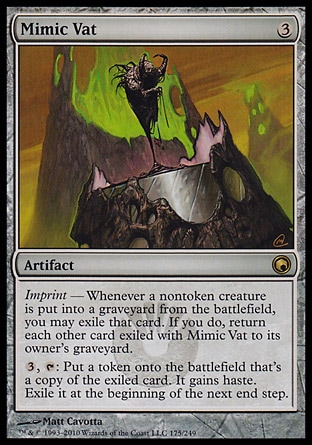
If the beginning of the end step doesn’t happen for the token created through Mimic Vat, like when it’s skipped by forcing the end of turn, the token doesn’t go anywhere. However, it will be awaiting its verdict during the next end step. An opponent’s end step is as good as yours.
But if you allow the delayed trigger to go on the stack, and THEN the end-turning effect happens and exiles it from there, the token gives a sigh of relief. The delayed trigger has gone off and away, nothing’s pending above it any more, and it may live its regular life until it meets its destiny in some way. The delayed trigger doesn’t go off anymore.
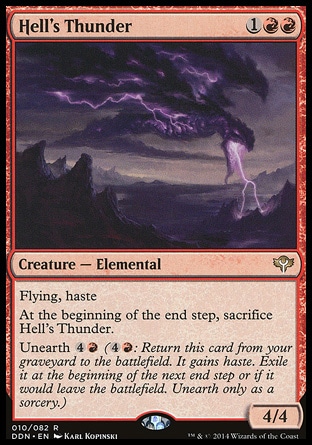
If you resolve the Sundial’s ability before the beginning of the end step, that step will be skipped, and the trigger of Hell’s Thunder cannot go off.
The same is true for the delayed trigger created at resolution of the activated ability Unearth. It doesn’t go off either since the beginning of the end step doesn’t happen. However, the delayed trigger is still delayed, it isn’t on the stack, it is just waiting for “a next beginning” of the end step. When such moment comes, even if it’s someone else’s turn, the trigger does go off. Nevertheless, it only triggers once, during “the next beginning” of the end step, and if you somehow deal with that one (Voidslime), you won’t be seeing it again.
Cleanup step begins
Here we are, straight in the Cleanup.
First of all, the active(!) player discards cards from hand exceding the maximum hand size, which is normally seven, but may be altered by effects. This is a so called turn-based action, it doesn’t use the stack.

With no other effects affecting the size of your hand, an opposing Jin-Gitaxias, Core Augur will have you discard your hand during the cleanup step.

If you control this masterpiece of architecture, you won’t have to discard anything during cleanup.
Continuous effects that affect the size of your hand do not affect an object, they modify the game rules. Such effects are applied after all other continuous effects on an imaginary, eighth layer. If there are multiple such effects, they are applied according to the timestamps: the one that was created last “wins”.
Then two things happen simultaneously: all damage marked on permanents is removed (including phased-out permanents), and “until end of turn” and “this turn” effects end. These are turn-based actions too, and they don’t use the stack either.
A creature that had been turned to Frog regains its original shape.

Islands cease to produce extra mana, since the effect of High Tide ends, and the delayed triggered ability no longer exists.
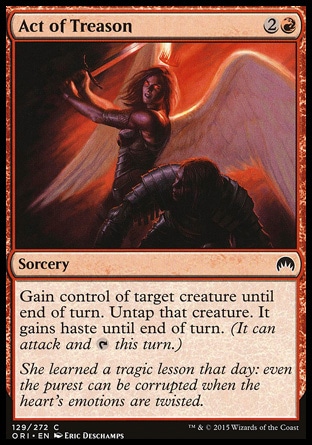
A “betrayer” creature returns under its owner’s control and loses Haste.
Normally, neither player receives priority during the cleanup step, so nobody can cast spells or activate abilities. But there are exceptions.
If at this point there are SBA to be performed, or triggers to be put onto the stack (remember the triggers we left pending?) those SBA are performed, then those triggers are put onto the stack, and then YAY! the active player gets priority and may cast a spell, activate an ability or perform a special action. When the stack is empty with both players having passed, then… next turn? You wish! Actually, another cleanup step begins!
So, if some triggers go off between the resolution of Sundial of the Infinite’s ability and the beginning of the cleanup step, including those that trigger “at the beginning of cleanup step”, they all go onto the stack, the active player gets priority and… then the usual chores.

Thawing Glaciers' delayed trigger goes off exactly in the cleanup step.
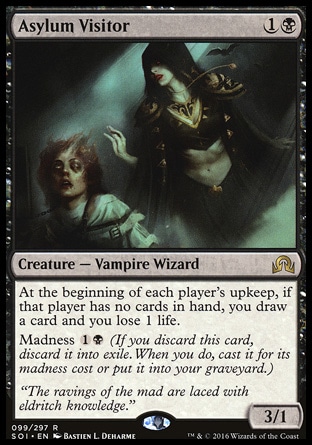
When discarding an excess Asylum Visitor during cleanup step, we can initiate the process of casting it through Madness.
If nothing like that happens, none of the players gets priority during the cleanup step, and the turn officially ends.
That’s all we had to say about Sundial of the Infinite and Time Stop.
An inquisitive reader will ask, what’s the point of this card, when is it useful? Check this out:

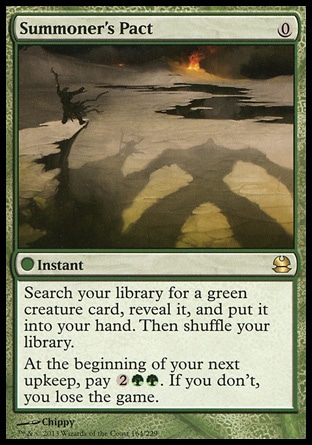


Smokestack has the following oracle text:
В«At the beginning of your upkeep, you may put a soot counter on Smokestack.
At the beginning of each player’s upkeep, that player sacrifices a permanent for each soot counter on SmokestackВ».
Obviously, during our upkeep we can put the triggers on the stack in the order we need them, resolve the sooting one, and then activate Sundial of the Infinite.
With enough counters on Smokestack, your opponent’s life won’t be easy.
Translated by Witas Spasovski

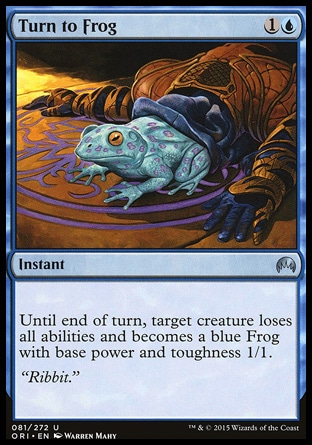
If your opponent in control of Hive Mind plays a couple of Pacts, you are facing a bitter destiny unless you happen to control a Sundial of the Infinite, whose ability will exile the triggers of your Pacts (the copies gifted to you through Hive Mind) from the stack, and you won’t be facing the choice of paying lots and lots of mana (which you might not even have access to) or losing the game.